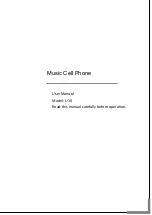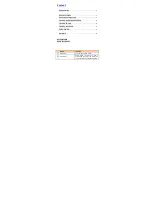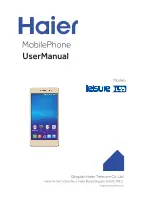
following measures:
- Reorient or relocate the receiving antenna.
- Increase the separation between the equipment and the receiver.
- Connect the equipment into an outlet on a circuit different from that to which the receiver is connected.
- Consult the dealer or an experienced radio TV technician for help.
For more information, refer to the online help system on
Razer.com.
FCC CAUTION
Any changes or modifications not expressly approved by the party responsible for compliance could void the user's authority to
operate this equipment. This device complies with Part 15 of the FCC Rules. Operation is subject to the following two conditions:
(1) This device may not cause harmful interference, and
(2) This device must accept any interference received, including interference that may cause undesired
operation.
Any changes or modifications not expressly approved by party responsible for compliance could void the
user authority to operate this equipment.
Hearing Aid Compatibility Information (HAC)
Your phone is compliant with the FCC Hearing Aid Compatibility requirements.
The FCC has adopted HAC rules for digital wireless phones. These rules require certain phone to be tested and rated under the
American National Standard Institute
(ANSI) C63.19-2011
hearing aid compatibility standards. The ANSI standard for hearing aid
compatibility contains two types of ratings:
M-Ratings: Rating for less radio frequency interference to enable acoustic coupling with hearing aids.
T-Ratings: Rating for inductive coupling with hearing aids in Tele coil mode.
Not all phones have been rated, a phone is considered hearing aid compatible under FCC rules if it is rated M3 or M4 for acoustic
coupling and T3 or T4 for inductive coupling. These ratings are given on a scale from one to four, where four is the most compatible.
Your phone meets the
M3/T4
level rating.
However, hearing aid compatibility ratings don't guarantee that interference to your hearing aids won't happen. Results will vary,
depending on the level of immunity of your hearing device and the degree of your hearing loss. If your hearing device happens to
be vulnerable to interference, you may not be able to use a rated phone successfully. Trying out the phone with your hearing
device is the best way to evaluate it for your personal needs.
This phone has been tested and rated for use with hearing aids for some of the wireless technologies that it uses. However, there
may be some newer wireless technologies used in this phone that have not been tested yet for use with hearing aids. It is important
to try the different features of this phone thoroughly and in different locations, using your hearing aid or cochlear implant, to
determine if you hear any interfering noise. Consult your service provider or the manufacturer of this phone for information on
hearing aid compatibility. If you have questions about return or exchange policies, consult your service provider or phone retailer.
Hearing devices may also be rated. Your hearing device manufacturer or hearing health professional may help you find this rating.
For more information about FCC Hearing Aid Compatibility, please go to http://www.fcc.gov/cgb/dro.



























